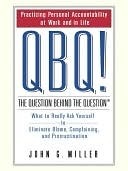More on this book
Community
Kindle Notes & Highlights
Read between
March 2 - March 6, 2023
Whatever happened to personal responsibility?”
Suddenly, there was a blur of activity off to my left, the “wind of enthusiasm” blew behind me, and then, over my right shoulder stretched the “long arm of service” delivering a twenty-ounce bottle, frosty on the outside, cold on the inside, of—you guessed it—Diet Coke!
This reminds me of the Simon Senek podcast that Kyle made us listen to about going above and beyond for your customers.
By then I was thinking profound and professional thoughts like Cool! But what I said was, “Come on, you’ve been awfully busy. How did you have time to go get it?” Smiling and seemingly growing taller before my eyes, he said, “I didn’t, sir. I sent my manager!”
“Why do I have to do everything around here?” “Who’s supposed to be covering this area, anyway?” “When is management going to provide us with more products?” “Why are we always so short-staffed?” “When are the customers going to learn to read the menu?” It’s understandable that someone would feel and think that way, especially when frustrated, but the truth is that these are lousy questions. They’re negative and they don’t solve any problems.
Incorrect Questions, or IQs,
That’s the difference personal accountability can make. Everyone wins: customers, coworkers, the organization—everyone.
Begin with “What” or “How” (not “Why,” “When,” or “Who”). 2. Contain an “I” (not “they,” “we,” or “you”). 3. Focus on action.
“What I really do is help people—including myself—eliminate victim thinking from their lives.” He must have understood me then because that was the end of the conversation. We never spoke again!
The best thing we can do to get rid of victim thinking in our world is to get rid of it in ourselves.
Stress is a choice.
“The reality is if a strategy or tactic is working now, the odds are high that it won’t work in the future. There is just too much change taking place in our world for it to be any other way.”
But thinking too much about what we’d like to have is another cause of procrastination.
“I find that every time I do the job with the tools I have, I tend to receive more tools.” It’s a truth: We sow, then we reap.
“How can I achieve with the resources I already have?”
there are no quick fixes for long-term problems?
“What can I do today to solve the problem?” “How can I help move the project forward?” “What action can I take to ‘own’ the situation?”
Accountable people look for solutions, not scapegoats.
“How can I let go of what I can’t control?”
Ownership: A commitment of the head, heart, and hands to fix the problem and never again affix the blame.
“How can I appreciate people’s gifts and strengths just as they are?”
I know what he was trying to say, but he missed the mark. Personal accountability does NOT begin with you. It begins with me.
There are two myths about accountability. The first one is when we believe it’s all about holding others accountable, as a manager might in setting standards, helping set goals, defining consequences, and coaching people toward agreed-upon levels of performance. Though important, this is not personal accountability.
Yes, teams are critical, but teams are based on individuals—and successful teams are based on individuals who practice personal accountability.
The truth is, if everyone is asking, “What can we do?” then nobody is asking, “What can I do?”
but the power of personal accountability comes from questions that begin with “What” or “How” and contain an “I.”
Managers don’t change people. They can coach, counsel, teach, and guide, but no one changes another person. Change only comes from the inside, as a result of decisions made by the individual.
One of the most tempting questions to ask when we first learn the QBQ is, “What can we do?” The problem is, “we” don’t change. Teams, departments, and organizations don’t change. People change, one at a time, through their own choices.
“God, grant me the serenity to accept the people I cannot change, the courage to change the one I can, and the wisdom to know—it’s me!”
Action, even when it leads to mistakes, brings learning and growth. Inaction brings stagnation and atrophy. • Action leads us toward solutions. Inaction does nothing and holds us in the past. • Action requires courage. Inaction often indicates fear. • Action builds confidence; inaction, doubt.
“How can I get to know him better?” “What can I do to help her get through these tough years?” “How can I improve my parenting skills?”
To learn how to utilize the QBQ more effectively at home, read Parenting the QBQ Way: How to Be an Outstanding Parent and Raise Great Kids Using the Power of Personal Accountability
Begin with “What” or “How” (not “Why,” “When,” or “Who”). 2. Contain an “I” (not “they,” “we,” or “you”). 3. Focus on action.
No more victim thinking, complaining, procrastinating, or blaming. • I can only change me. • Take action!
Learning is really about translating knowing what to do into doing what we know. In other words, it’s about changing.


